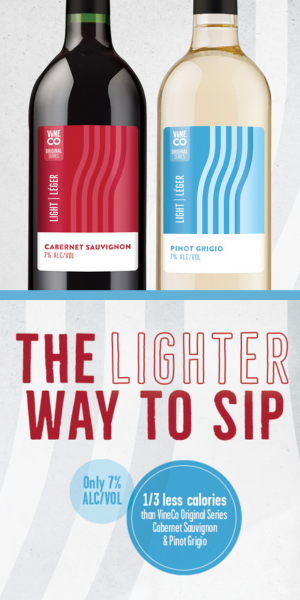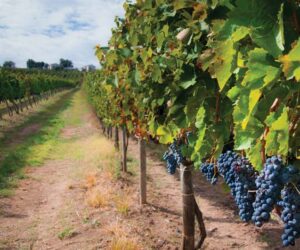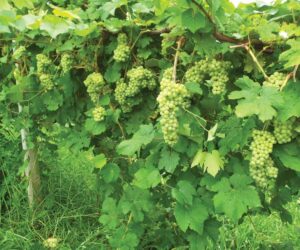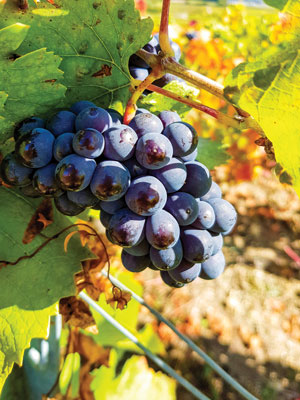
You learn a lot of things on safari. We generally associate the term safari with expeditions in Africa, but safari, loosely defined, is an exploration of the unknown. The executives at Apple linked it to surfing the world wide web with their browser software. In my case, the allusion to safari was a couple of days spent in the Champagne region of France. My wife Polly and I travel to France every other year and like to spend a couple days decompressing someplace from the long flight and adjusting to the new time zone. Champagne was the last remaining “major” wine region in France we had yet to explore — and what an eye-opening experience indeed! We decided to do the touristy thing by day and go to a few of the mainstream Champagne houses. Forgoing the bustling city of Reims, we opted to enjoy the relaxed evening scene in Épernay. And of course, drinking Champagne, in the Champagne region, just because we could! Of the three key varieties of grapes that the region authorizes, I learned a lot about the lesser-known variety, Pinot Meunier. Step aside Pinot Noir and Chardonnay, today’s song is not about you. Because Pinot Meunier, while still virtually unknown in the United States, is becoming a significant component in the bubbly wines of Champagne that we enjoy and increasingly a part of some of the New World sparkling wines trying to mirror Champagne’s Old-World complexities.
The safari not only taught me a lot about Pinot Meunier, but there was a little bit of history and nostalgia incorporated into the trip. You see, from a nostalgia aspect, my grandfather was a soldier in the United States Army during World War I. He served in the trenches of Verdun, just to the east of the Champagne region in 1918. As we travelled to see where he served, we couldn’t help but think about how the war (1914–1918) affected the region. Everywhere we went, there was a story. The vineyards were criss-crossed by trenches, all the men in the region were in those trenches. Harvests were cut short to keep the fruit from falling into the hands of the Germans. The women and children moved underground into the vast caves dug out of the Champagne countryside to escape the onslaught of the war. Soldiers from both sides pilfered bottles of Champagne as was evidenced by empty bottles littering the roadside. But interestingly, the wines were still made, and wines from 1914, 1915, and 1916 went on record as great vintages. It was the whole village making the wines, not just one person. And when you think about it . . . Pinot Meunier is part of that “village” we
call Champagne.
Ampelographically, Pinot Meunier, or Meunier as some shorten its description to, is a black grape with indented leaves with what appears to be white powder on the underside, and to a lesser extent, the top of the leaves. The white powder resembles flour and Meunier translates to “miller” in French. The powdery appearance is actually fine white hairs, and depending on the Meunier clone, the degree of hairiness can vary. There is one mutation that actually has no hair, leading geneticists to think there is a similarity to Pinot Noir.
While it is early budding and ripening, it is not as early as Pinot Noir, thus less prone to spring frosts and coulure.
While it is early budding and ripening, it is not as early as Pinot Noir, thus less prone to spring frosts and coulure. Coulure is the description in French for shatter, or the incomplete development of berries on the cluster due to environmental conditions at flowering. This could be cold or rainy events, which affect the ability of the flower to self-pollinate. Growers tend to plant Meunier on the cooler north-facing vineyards for this is a hardy grape variety and the second most planted in the Champagne region after Pinot Noir, despite the wines being made from it are fruitier and more mature. It is blended with Pinot Noir and Chardonnay to make the base wines of Champagne before they are put into the sparkling wine programs of the respective producers.
When it comes to sparkling wine, in my learnings and teachings, Dom Perignon was the general model. Chardonnay was pressed in a blanc de blancs, or white of whites. Meunier and Pinot Noir were pressed in a blanc de noirs, or white of black. Depending on the degree of skin contact, this blanc de noirs might actually be characterized as a rosé. Each vintage, still wines are made, malolactic fermentation was encouraged and that vintage’s wines were then sweetened with the tirage and placed in the bottle and crown-capped for the regulated amount of time. At least that’s how I thought it was supposed to be.
It is true that the wines are first made into still wines, but where my California-esque knowledge gets corrupted starts from there. Previously unbeknownst to me, Meunier and Pinot Noir are sometimes made as traditional still red wines. That is, seven- to ten-day maceration for color extraction before pressing. Some of these still wines are kept that way in bulk for future blending with Chardonnay to make rosé throughout the year and even held longer for subsequent vintages as well. It took some teasing to get this information but this was truly a learning moment. Once the winemakers understood my experience, they started to share their secrets.
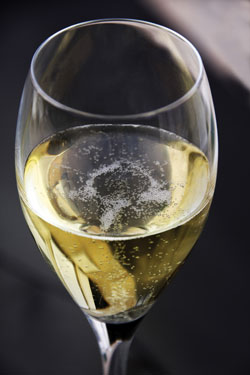
Another smaller Champagne house in Épernay shared with me some other, what I would refer to as non-traditional, techniques. I only refer to them as non-traditional in that it was not how I understood Champagne was produced. This small house’s secret was pressing the Meunier, Chardonnay, and Pinot Noir clusters to juice and then barrel fermenting the juice until dry. They added another twist in that they inhibited the malolactic fermentation to preserve the crisp acidity. I had always had the philosophy that Champagne involved malolactic negative wine. The rationale being that if a malolactic conversion started in the bottle, during the secondary yeast fermentation, then there would be additional carbon dioxide bubble contribution, leading to over-fizziness. But what I understood after that conversation is that the winemakers effectively inhibited the malolactic fermentation with a small amount of sulfur dioxide after the wines went dry in the tank. Now France finds itself dealing with warmer temperatures, and lower acidities. The years 2018 and 2019 saw some of the biggest heat waves in recent records and there is concern north to south about how their wines and their traditional winemaking rules will change. This is this Champagne house’s answer to preserve that acidity, since acidulation is prohibited in France. Warmer temperatures are recognized as a concern by winegrowers and winemakers alike, not just specific to France, but to the world.
Another thing I learned on this safari, is that the Champagne region is all about blending, and Meunier is the fruit and acid component contributing to the blend. It is a rare occurrence that you will see a wine that is one hundred percent Meunier. Jancis Robinson writes that Meunier contributes youthful fruitiness but not longevity and, “few growers prize it enough to make it a Meunier dominated wine, although there are some exceptions . . . notably Krug.” In reviewing the Krug website (https://www.krug.com/the-house), I really couldn’t pin down a Meunier-dominated wine, but found they have great respect for the grape varietal, consistently including it in 20–25% of the overall blend. The New York Times reports that Bedel and José Michel make a Champagne from one hundred percent Meunier.
In areas of France outside of Champagne it is recommended and permitted in several appellations, notably the Loire valley. It is the principle component in the rosé wines of Touraine Noble-Joué and the red and rosé wines of Orléans. It is interesting that just across the Channel they are growing it in southern England to be blended with Chardonnay and Pinot Noir. Germany has about 7,000 acres (2,800 ha) planted under the name Müllerrebe, or the rather misleading name Schwarzriesling, as Meunier is also known there.
The overall chemical matrix of the wine can be made so much better from blending.
Meunier shows up all over the world. Its acreage is really small and its production is limited to sparkling wine regions. Oregon reports some acreage in the Willamette Valley. California reported 163 acres (66 ha) in 2010, and just 174 acres (70 ha) in 2018. Not a huge demand, but some producers, like Domaine Chandon, produce a still red varietal wine.
So what to say about this apparently important variety? I feel the importance lies within its contributions to the overall blend. I have seen it in winemaking many times over the last 25 years. On their own, a variety can be somewhat mediocre or one dimensional, but just like a good poker hand, it takes a couple more cards to win the pot. An ace will sometimes win the hand, but two aces will be better. That’s the role of Meunier in most cases. It may not be an ace, but in the right situation, provide a royal flush. The overall chemical matrix of the wine can be made so much better from blending. So from a winemaking standpoint, you have to be prepared to use all or some of each of the components, and blending trials are the key. If you have something left over, well that is simply wine for another day; another blend.
Pinot Meunier Recipe
Yield 5 gallons (19 L)
Ingredients
125 lbs. (57 kg) Pinot Meunier fruit
Distilled water
10% potassium metabisulfite (KMBS) solution (Weigh 10 grams of KMBS, dissolve into about 50 mL of distilled water. When completely dissolved, make up to 100 mL total with distilled water.)
5 g Lalvin RC212 yeast (Lallemand BGY, UCD-51, or Red Star Premier Cuvee can be used as a substitute.)
10 g Di-ammonium Phosphate (DAP)
10 g Go-Ferm
10 g Fermaid K (or equivalent yeast nutrient)
Malolactic Fermentation Starter Culture (CHR Hansen or equivalent)
Other equipment or needs specific to this recipe
15-gallon (57-L) food-grade plastic bucket for fermentation
5-gallon (19-L) carboy
1–2 one-gallon (3.8-L) jugs
Racking hoses
Crush equipment, destemmer/crusher
Wine press
Inert gas (nitrogen, argon or carbon dioxide)
Ability to maintain a fermentation temperature of 85–90 °F (30–32 °C)
Thermometer capable of measuring between 40–110 °F (4–43 °C) in one degree increments
Pipettes with the ability to add in increments of 1 milliliter
Tartaric acid – addition rate is based on acid testing results
Step by step
- Crush and destem the grapes. Transfer the must to your fermenter.
- Add 15 mL of 10% KMBS solution during transfer. (This addition is the equivalent of 50 ppm SO2.) Mix well.
- Test for Brix, acidity, and pH. Keep record of results.
- Layer the headspace with inert gas and keep covered. Keep in a cool place overnight.
- The next day suspend the Fermaid K in a little distilled water (usually ~20 mL). Add to must and mix well.
- Review the lab results you took yesterday. Typical Brix for this style is 24–25 °Brix. Typical acid levels will be 0.65–0.7%. Adjust as necessary with tartaric acid. If the acid is higher than 0.7%, don’t panic. This recipe calls for a minimum final acidity of 0.5%. Higher acid won’t hurt here.
- Prepare yeast per manufacturer’s instructions.
- When the yeast is ready, add it to the fermenter and mix.
- You should see signs of fermentation within about one to two days. This will appear as some foaming on the must surface and it will appear that the berries are rising out of the medium. This is commonly referred to as the “cap rise.”
- You need have on hand the ability to push the grapes back into the juice to promote color and tannin extraction. This is called “punching down” and should be done three times per day. Use a clean utensil or your hand to mix.
- Monitor the Brix and temperature twice daily during peak fermentation. Morning and evening is best and more often if the temperature shows any indication of exceeding 85 °F (29 °C). Place frozen water bottles in the fermentation, mix the must. Wait 15 minutes, mix and check the temperature again. Do this as often as it takes to keep the temperature between 85–90 °F (30–32 °C). Do not cool off to less than 80 °F (27 °C).
- At about 19 °Brix, dissolve the DAP in a small amount of distilled water and mix into the must.
- When the Brix reaches zero (about 5–7 days), transfer the must to your press, and press the cake dry. Keep the free-run wine separate from the press portion for now. Be sure to label your vessels to keep the press portion separate!
- Transfer the wine to your carboys or one-gallon (3.8-L) jugs. Your press fraction may only be a one or two gallons (3.8–7.6 L). Make sure you do not have any head space. Place an airlock and label the vessels.
- Inoculate with your malolactic (ML) bacteria. Check the manufacturer’s instruction on how to prepare and inoculate. Reattach airlocks to allow CO2 to escape.
- Monitor the ML fermentation using a thin layer chromatography assay available from most home winemaking supply stores. Follow the instructions included in the kit.
- When the ML is complete, measure the residual sugar using the Clinitest®. If the result is greater than 0.5%, and there are no signs of fermentation, then you might want to consider writing the Wine Wizard to see why fermentation stalled.
- Add 2 mL of fresh KMBS (10%) solution per gallon (3.8 L) of wine. This is the equivalent to ~40 ppm sulfite addition.
- Place the wine in a cool place to allow proper settling.
- Consider adding some French and/or American oak chips to your press fractions. Do not treat the entire lot of wine.
- After two weeks, test for pH and SO2, adjust the SO2 as necessary to attain 0.8 ppm molecular SO2. (There is a simple SO2 calculator at winemakermag.com/sulfitecalculator). Check the SO2 in another two weeks and adjust. Once the free SO2 is adjusted, maintain at this level. You’ll just need to check every two months or so, and before racking.
- Rack the wine clean twice over 6–8 months time frame to clarify. Fining and/or filtration are generally not needed if SO2 are maintained and there are no surface films or indications of subsequent fermentations. Consult winemakermag.com for tips on fining and filtration if problems become evident.
- Once the wine is cleared, it is time to move it to the bottle. This would be about 12 months after fermentation has finished.
- Make the project fun by having a blending party to integrate the oak fraction back into the free run. You may not need it all, use your judgment and make what you like.
- If all has gone well to this point, given the quantity made, it can probably be bottled without filtration. That said, maintain sanitary conditions while bottling. Once bottled, you’ll need to periodically check your work by opening a bottle to enjoy with friends. Have fun!

